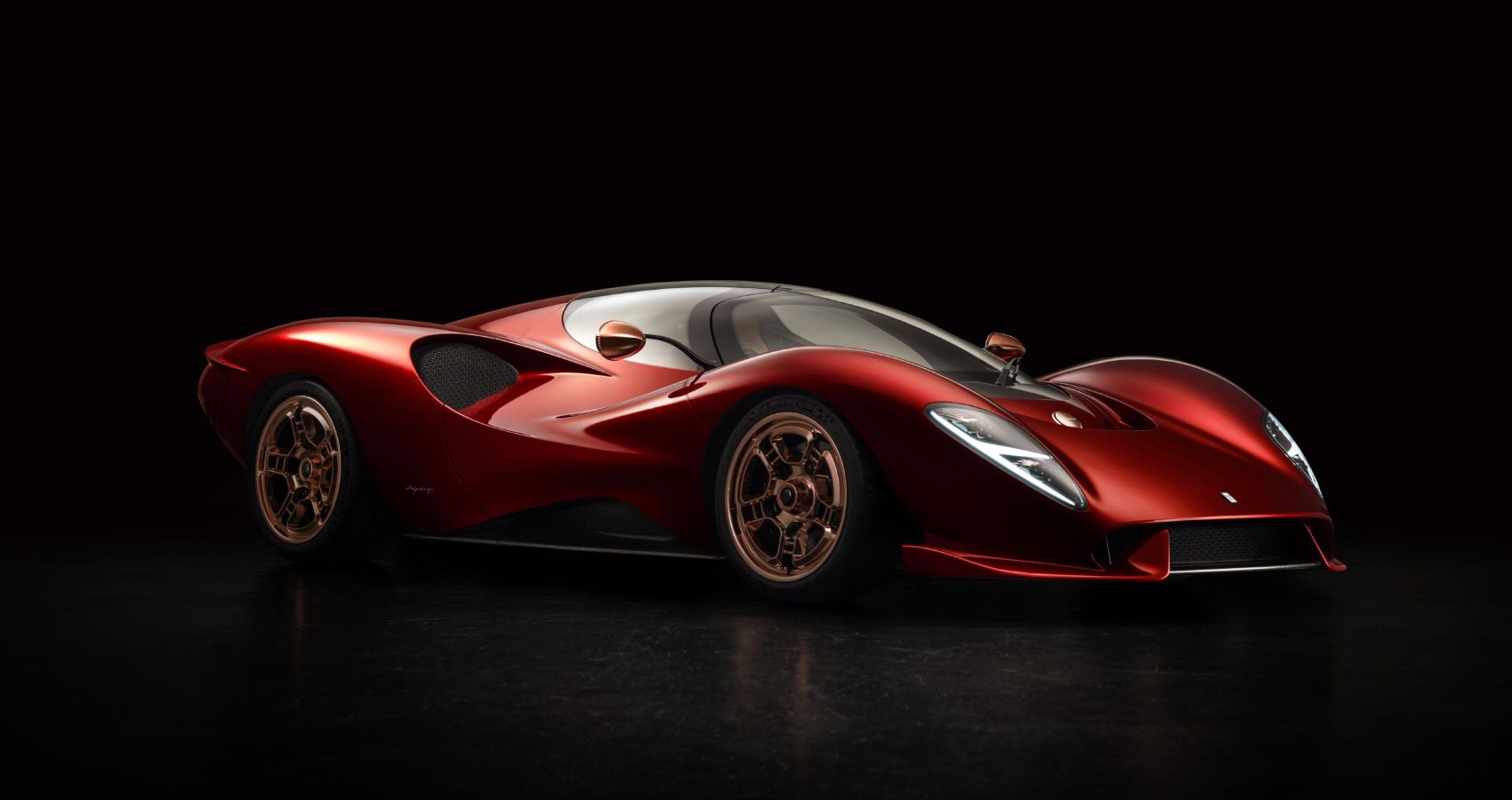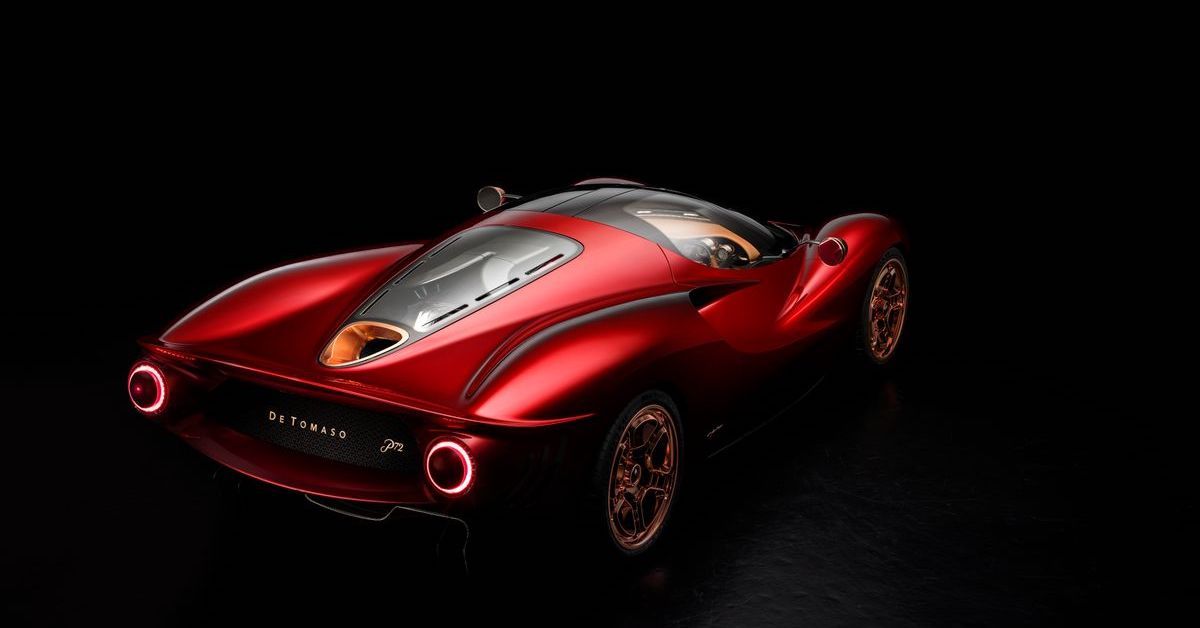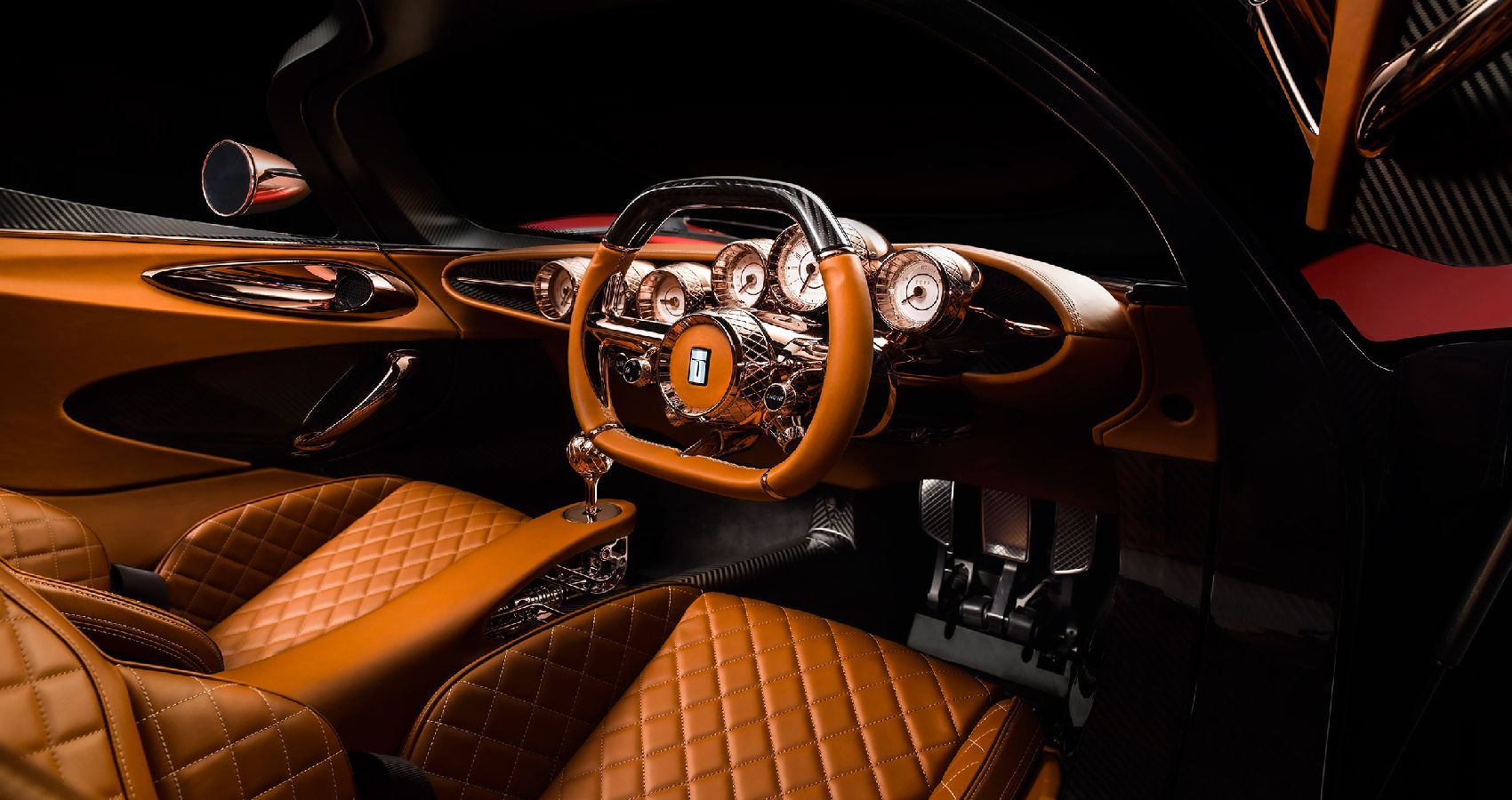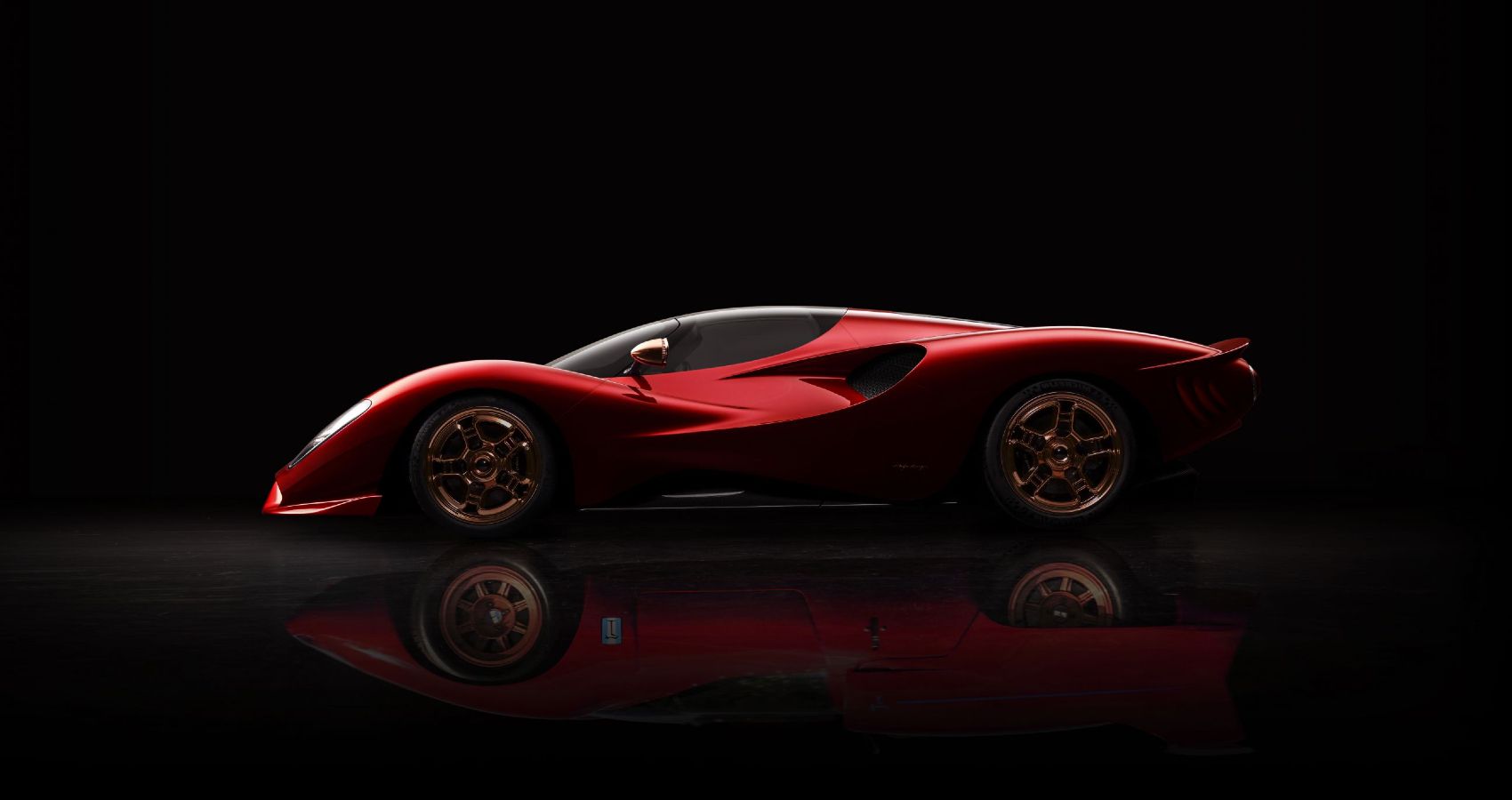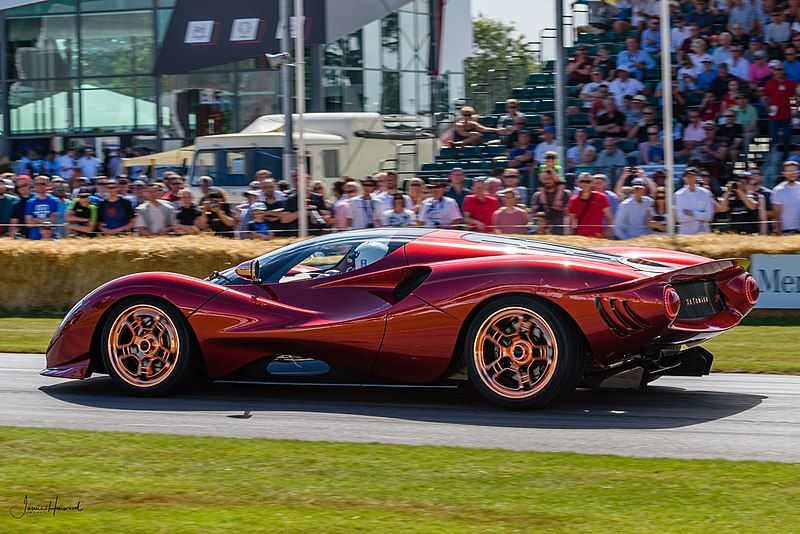The De Tomaso P72 didn’t deviate from its Italian roots, despite getting produced by a new Chinese owner. In 2019, two years after De Tomaso’s 60th birthday, the automaker unveiled the retro-styled, extremely handsome De Tomaso P72 limited-edition sports car. It was the marque’s first product since it got acquired in 2014 by a Hong Kong-based, newly formed company called Ideal Team Ventures.
The P72 featured throwback design and engineering cues, ranging from the nostalgic curves of its bodywork to its manual transmission. It’s when you peer inside the car that you’re immediately reminded this is a modern, even futuristic, hypercar, thanks to the P70’s superbly high-end interior.
Ideal Team Ventures is the same company running Apollo Automobil, explaining the shared carbon fiber chassis between the De Tomaso P72 and the Apollo Intensa Emozione, one of the most breathtaking and wildest supercars we've ever seen. The automaker claims the chassis meets the FIA Le Mans Prototype specifications. Like the Apollo, the P72 wrapped itself with beautifully designed louvers, curves, and diffusers. Aren’t these the ingredients for entry into the FIA's upcoming hypercar class? Let’s dig in.
The De Tomaso P72 Development History
The De Tomaso P72 will enter production this December, according to the automaker. The retro-styling is a homage to the De Tomaso P70 (also known as De Tomaso Sport 5000) prototype racing car. To appreciate the weight of this homage, it’s important to remember the P70.
De Tomaso built the short-lived racing car in 1965, equipping it with a 289 cu-in Ford V8 engine for use as a grand tourer. Out of the planned fifty units, only one P70 got built. As such, it never did more than compete in one race (the 1966 World Sportscar Championship Mugello 500 km) as a sports prototype. The company’s founder Alejandro de Tomaso developed the original P70 as an answer to criticism of the De Tomaso Vallelunga sports car, its first-ever road-going car introduced the previous year.
With the Vallelunga slammed for not being powerful enough, De Tomaso partnered with Carroll Shelby to source the Ford V8, tuning it to produce 475 horsepower at 7,300 rpm. Shelby didn't like the aluminum bodywork built by local metalworkers in Italy and had it redeveloped to feature a moveable rear wing and full doors. Regardless, De Tomaso felt betrayed when Shelby pulled out of the P70 project as the sun set in 1965 to focus on the Ford GT40, fraught with its own challenges.
With Carroll gone, De Tomaso turned to Carrozzeria Ghia, debuting the P70 (also known as Ghia DeTomaso) at the November 1965 Turin Motor Show. This background shows the P70’s unfinished business, as De Tomaso felt robbed of his FIA racing dreams. With De Tomaso mentioning that the upcoming “Project P” rides on a carbon fiber monocoque chassis built to LMP1 standards, it hints at the P72's poise to finish what the P70 started, even if it does so as a Chinese-owned hypercar.
De Tomaso P72 Exterior And Interior Design
Jowyn Wong of the London-based automotive design consultancy firm Wyn Design is responsible for the design of the De Tomaso P72 two-door coupe. The exterior features a throwback blend of the original P70 and 1970s Le Mans racing cars. Wong did an excellent job combining both classic and modern design elements, including the top-mounted exhaust system.
Inside, the circular analog and digital instrumentation design pays homage to the interiors of the 1960s and 1970s sports cars. The P72 looks stunning with diamond-stitched leather, accented by an ultra-high-end cockpit with polished copper elements. The authentic manual transmission features an open linkage gearshift lever finished in copper.
De Tomaso P72 Specifications
During the unveiling of the De Tomaso P72 in October 2019, the automaker revealed the upcoming hypercar’s source of power – a mid-mounted 5.0-liter supercharged Ford Coyote V8 engine (Ford Modular Engine) featuring a Roots-type supercharger made by American tuning company Roush. Roots-type blowers are positive displacement superchargers that work by pumping fluid via a pair of meshing lobes resembling a set of stretched gears. Fluid gets trapped in pockets surrounding the lobes and carried from the intake side to the exhaust. Although technically a Roush-manufactured engine, both companies collaborated in developing the P72's V8.
They paired it with a six-speed manual transmission to generate 700 brake-horsepower at 7,500 rpm and 608 lb-ft of torque sent to the rear wheels. We don't have the performance stats for this car yet, but we know the automaker plans to limit production to just 72 units, mainly to drive the exclusivity way up. Although the P72 will get motorsport homologation, the automaker said nothing will change from the prototype displayed at the Goodwood event.
The De Tomaso P72’s Glorious Goodwood Debut
De Tomaso stunned at the 2019 Goodwood Revival with its retro-sensual styling, creating room for itself in the already saturated world of Italian supercar brands. “A similar way the Pantera created a new category when it debuted in 1970, the P72 will create a new benchmark of its own,” said Ryan Berris, De Tomaso General Manager. “We have created a modern-day time machine that pays homage to an integral part of history and a car with its own provenance.”
The P72 is just what the industry needs now that everyone is renting and posing with prohibitively expensive Lamborghinis and Ferraris for Instagram and TikTok clicks, inadvertently cheapening these brands in the eyes of those that can actually afford to own them. A huge part of the De Tomaso P72’s beauty is that it’s going to be as prohibitively expensive as it is prohibitively exclusive, effectively keeping the selfie sticks at bay.
This car isn’t made with Instagram influencers in mind, not with its exquisite attention to detail that borders on obsession. The butterfly doors open to the finest tan leather upholstery and an abundance of carbon fiber, accented by copper-finish instrumentation. The open linkage gearshift lever reminds you of Pagani, another exclusive brand we don’t see every day on social media.

